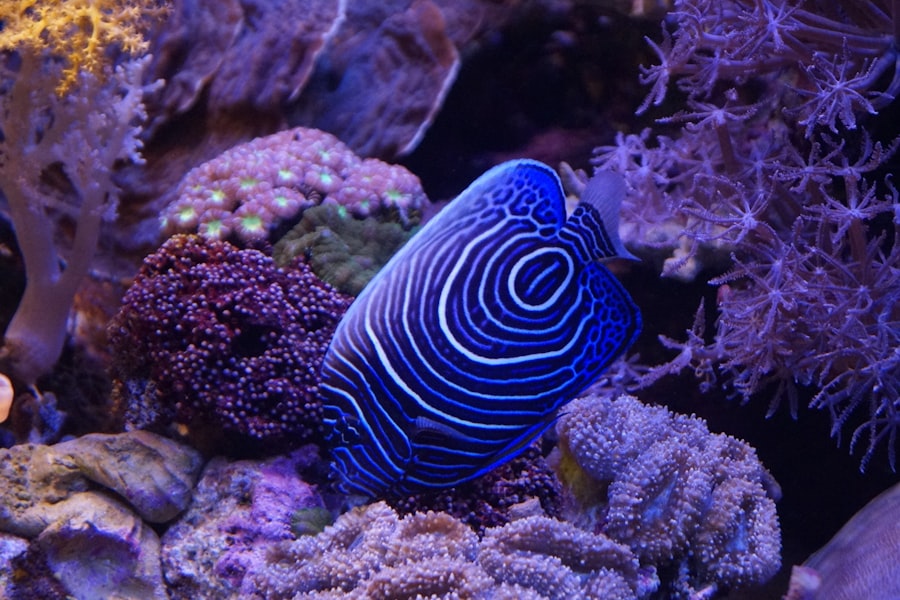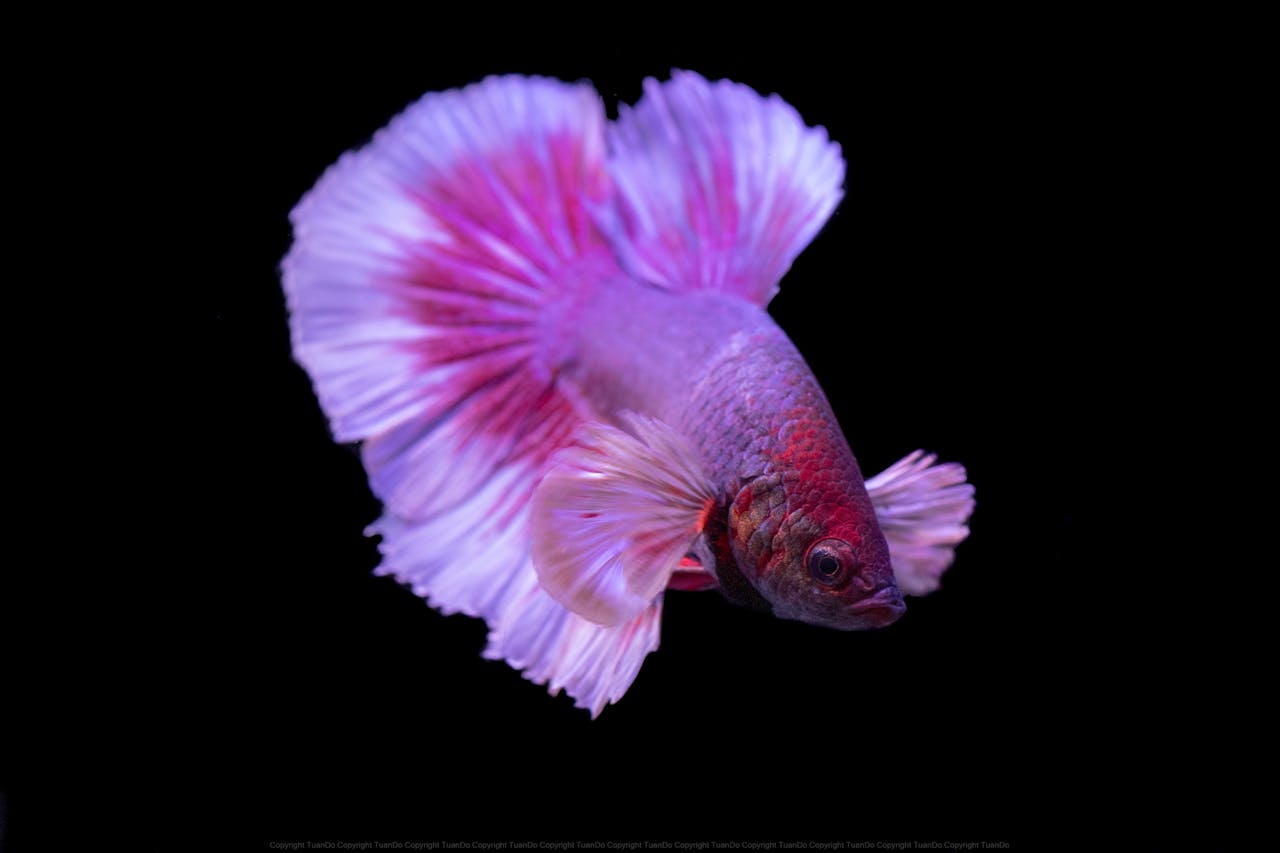The Siamese fighting fish, known scientifically as Betta splendens, has a rich and storied history that traces back to the waters of Southeast Asia. Originating in Thailand, these fish were initially bred for their fighting abilities, a practice that dates back centuries. In the 19th century, the Thai nobility began to take an interest in these fish, leading to the establishment of formal breeding programs.
The sport of fish fighting became a popular pastime, with enthusiasts betting on their prized specimens. This cultural significance has shaped the perception of Siamese fighting fish, transforming them from mere combatants into symbols of beauty and resilience. As we delve deeper into their history, we discover that the Siamese fighting fish was not only a source of entertainment but also a part of local folklore and tradition.
The fish were often associated with strength and bravery, embodying the spirit of the Thai people. Over time, their popularity spread beyond Thailand, reaching other parts of Asia and eventually making their way to the Western world. By the mid-20th century, Siamese fighting fish had become a staple in aquariums globally, captivating fish enthusiasts with their vibrant colors and unique personalities.
This journey from humble beginnings to global recognition highlights the enduring appeal of these remarkable creatures.
Key Takeaways
- Siamese Fighting Fish, also known as Betta fish, have a long history of being bred for aggression and fighting in Thailand.
- The vibrant colors of Siamese Fighting Fish are a result of selective breeding, with variations including red, blue, green, and even metallic shades.
- The unique fins and tails of Siamese Fighting Fish come in a variety of shapes, including the iconic long, flowing fins of the Halfmoon Betta.
- Siamese Fighting Fish are known for their aggressive behavior, especially towards other male Betta fish, and should be kept in separate tanks.
- Proper care and maintenance, including a suitable tank size, water temperature, and a balanced diet, are crucial for the health and well-being of Siamese Fighting Fish.
The Vivid and Diverse Colors of Siamese Fighting Fish
Color Palette
These fish display an array of hues, ranging from deep blues and vibrant reds to shimmering greens and yellows. The genetic diversity among different strains has led to the development of unique color combinations and patterns, making each fish a work of art in its own right.
Communication and Behavior
As we observe these colors, we can appreciate how they serve not only as a visual delight but also as a means of communication among the fish. The colors of Siamese fighting fish are not merely for show; they play a crucial role in their behavior and interactions. Males, in particular, display their vibrant colors during courtship rituals or when asserting dominance over territory.
Adaptability and Expression
The intensity of their colors can change based on their mood or environmental conditions, showcasing their adaptability. This dynamic nature of their coloration adds another layer of fascination for us as observers, allowing us to witness the interplay between biology and behavior in real-time.
The Unique Fins and Tail of Siamese Fighting Fish

In addition to their stunning colors, Siamese fighting fish are renowned for their unique fins and tails. These features come in various shapes and sizes, contributing to the overall aesthetic appeal of the fish. From long, flowing fins that resemble delicate silk ribbons to shorter, more compact fins that exude strength, each variation tells a story about the fish’s lineage and breeding.
As we explore these differences, we can appreciate how selective breeding has enhanced these traits over generations. The fins and tails of Siamese fighting fish also serve practical purposes beyond aesthetics. They are essential for maneuverability in the water, allowing these fish to navigate their environment with grace and agility.
The elaborate fins can also be used as a display during aggressive encounters or courtship rituals, further emphasizing their role in communication. Observing these interactions provides us with insight into the complex social dynamics of Siamese fighting fish, revealing how beauty and functionality coexist in nature.
The Aggressive Nature and Behavior of Siamese Fighting Fish
| Behavior | Aggressive Nature |
|---|---|
| Fin Nipping | Siamese fighting fish are known to nip the fins of other fish, especially those with long, flowing fins. |
| Territoriality | They are highly territorial and will aggressively defend their space, often leading to fights with other fish. |
| Displaying Aggression | Male Siamese fighting fish often display aggressive behavior towards other males, especially when establishing dominance or competing for a mate. |
| Chasing and Attacking | They are known to chase and attack other fish, particularly those with similar body shapes or colors. |
Siamese fighting fish are well-known for their aggressive nature, particularly among males. This aggression is rooted in their history as fighters, where territorial disputes often lead to confrontations. When two males encounter each other, they engage in elaborate displays that include flaring their fins and changing colors to assert dominance.
This behavior is not just instinctual; it is a learned response that has been honed through generations of selective breeding for aggression in combat situations. Understanding this aggressive behavior is crucial for anyone considering keeping Siamese fighting fish as pets. While they can be kept in community tanks under specific conditions, it is generally advisable to house males separately to prevent fights that can lead to injury or death.
Observing their interactions can be both thrilling and educational for us as aquarists, as we witness firsthand the complexities of animal behavior and social hierarchy within this species.
The Importance of Proper Care and Maintenance for Siamese Fighting Fish
Caring for Siamese fighting fish requires a commitment to providing an optimal environment that meets their specific needs. These fish thrive in warm water temperatures ranging from 76°F to 82°F (24°C to 28°C) and require clean, well-filtered tanks to maintain their health. Regular water changes are essential to prevent the buildup of harmful toxins that can affect their well-being.
As responsible caretakers, we must also ensure that our tanks are equipped with appropriate hiding spots and plants to mimic their natural habitat. Feeding is another critical aspect of proper care for Siamese fighting fish. A balanced diet consisting of high-quality pellets, frozen or live foods such as brine shrimp or bloodworms will help maintain their vibrant colors and overall health.
Overfeeding can lead to obesity and other health issues, so we must be mindful of portion sizes. By investing time and effort into understanding their care requirements, we can create a thriving environment that allows our Siamese fighting fish to flourish.
The Breeding and Reproduction of Siamese Fighting Fish

Breeding Siamese fighting fish can be a rewarding yet challenging endeavor for aquarists. The process begins with selecting healthy breeding pairs that exhibit desirable traits such as vibrant colors and strong fin structures. Once paired, the male will build a bubble nest at the water’s surface, which serves as a safe haven for the eggs once they are fertilized.
This nesting behavior is fascinating to observe; it showcases the male’s instinctual drive to protect his offspring.
The male will guard the nest diligently until the eggs hatch, which typically takes about 24 to 36 hours.
Once the fry are free-swimming, they require specialized care, including finely crushed food or infusoria until they are large enough to consume larger pellets.
The Role of Siamese Fighting Fish in Art and Culture
Siamese fighting fish have transcended their origins as combatants to become significant figures in art and culture across various societies. In Thailand, they are celebrated not only for their beauty but also for their historical importance as symbols of strength and perseverance. Traditional Thai art often features these fish, showcasing their vibrant colors and graceful movements in paintings and sculptures.
This cultural representation reflects our deep connection with nature and the appreciation for its beauty. In contemporary culture, Siamese fighting fish have found their way into various forms of media, including photography and digital art. Their striking appearance makes them popular subjects for artists seeking to capture the essence of aquatic life.
Additionally, social media platforms have allowed enthusiasts to share their experiences with these fish, fostering a global community that celebrates their beauty and uniqueness. As we engage with this culture surrounding Siamese fighting fish, we contribute to a growing appreciation for biodiversity and conservation efforts.
The Growing Popularity of Siamese Fighting Fish as Pets
In recent years, the popularity of Siamese fighting fish as pets has surged dramatically. Their captivating colors, unique personalities, and relatively low maintenance requirements make them an attractive choice for both novice and experienced aquarists alike. As more people discover the joys of keeping these fish, we see an increase in awareness about proper care practices and responsible ownership.
The accessibility of information through online forums and social media has played a significant role in this trend. We can easily find resources on breeding techniques, tank setups, and health care tips that empower us to provide better environments for our pets. Additionally, local pet stores have expanded their offerings to include various strains of Siamese fighting fish, catering to diverse preferences among hobbyists.
This growing interest not only enhances our appreciation for these remarkable creatures but also encourages responsible practices that ensure their well-being in captivity. In conclusion, our journey through the world of Siamese fighting fish reveals much about their origin, beauty, behavior, and significance in culture. As we continue to explore this fascinating species, we deepen our understanding of aquatic life while fostering a sense of responsibility towards their care and conservation.
Whether we admire them for their vibrant colors or engage with them as pets, Siamese fighting fish hold a special place in our hearts and homes.
If you are interested in learning more about siamese fighting fish, also known as bettas, you may want to check out this article on how to properly care for betta fish. This article provides valuable information on the proper tank setup, feeding, and water conditions needed to keep your betta healthy and happy. It is important to educate yourself on the specific needs of these beautiful fish to ensure they thrive in their environment.


